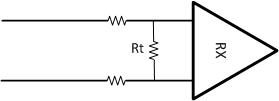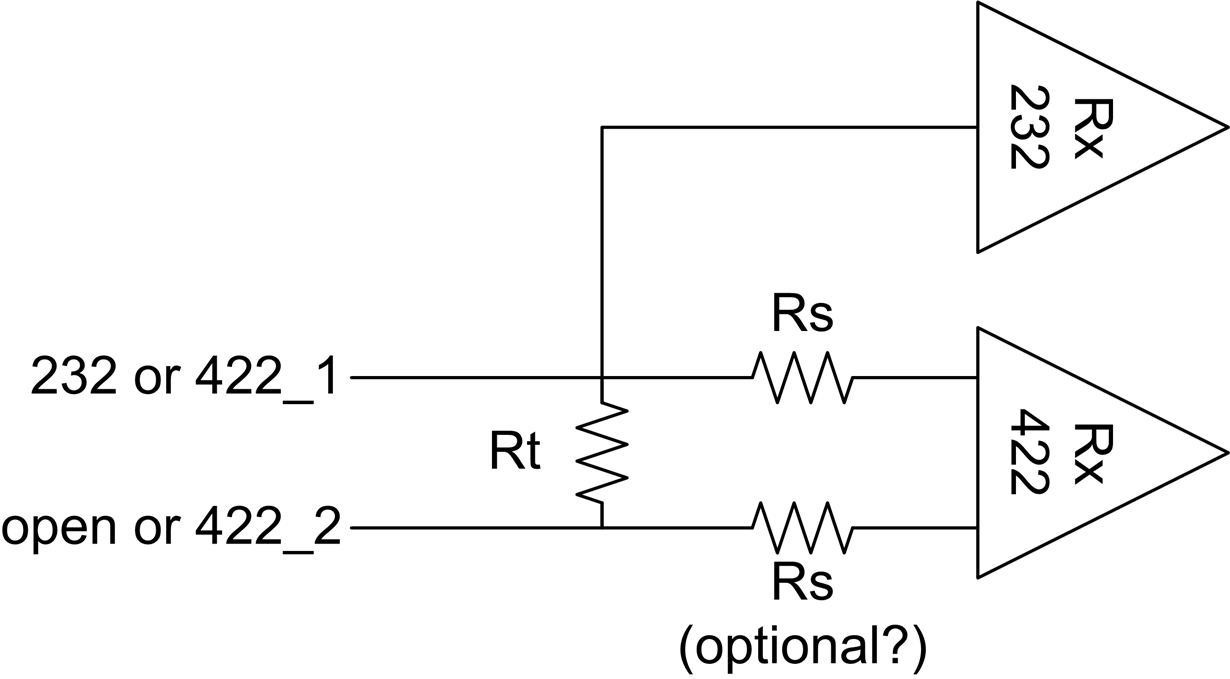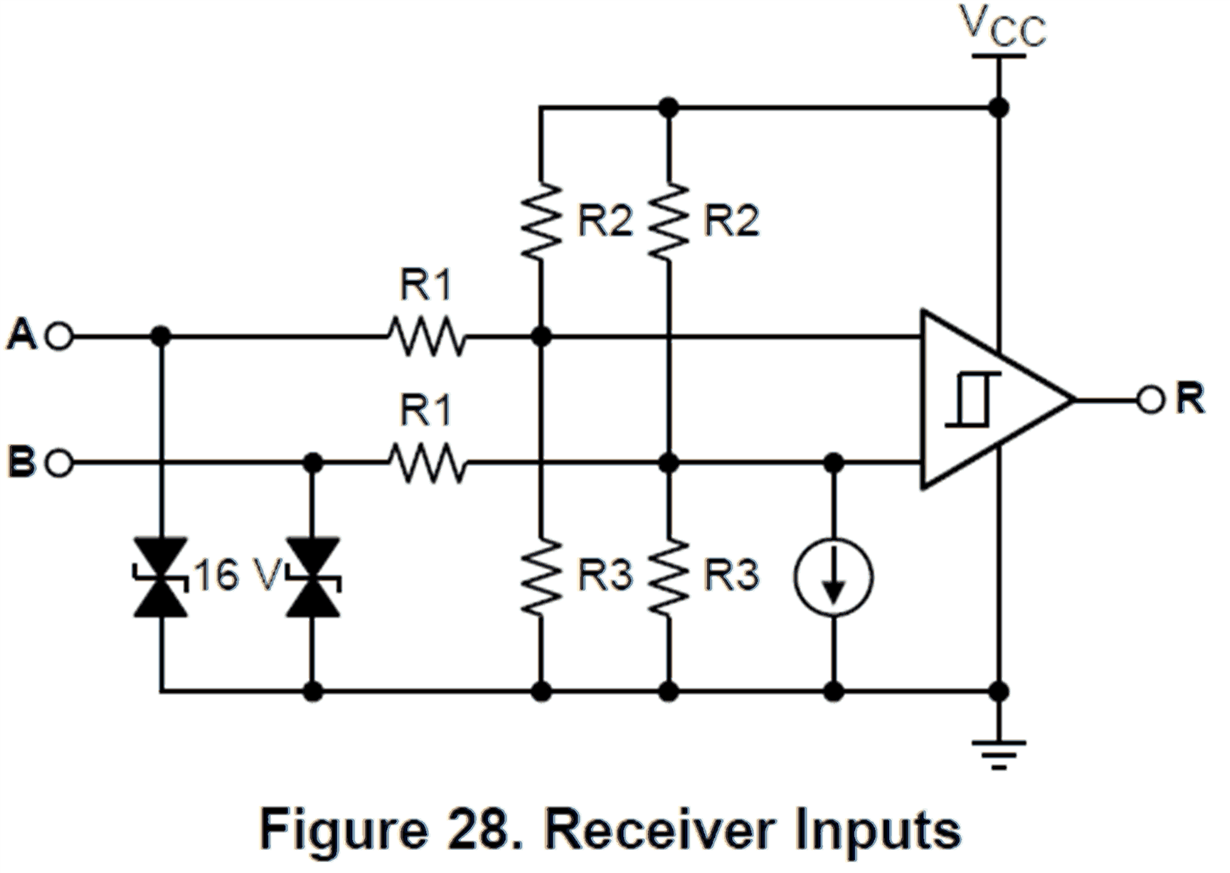Hello TI,
Similar to this thread:
http://e2e.ti.com/support/interface/f/138/t/353743
we wish to extend the SE input swing of the SN65HVD7x buffer to be RS-232 swing compatible: ±25V if possible, or at least ±15V, per input pin, each input pin independent of the other, if possible.
Would it be possible to achieve this by adding a series resistor (or series resistor plus clamp) between the receiver-side RS-422 termination and the input pins of the SN65HVD7x, and what would the recommended maximum resistor value be for reliable RS-422 operation?





